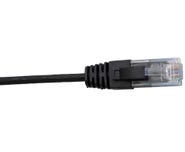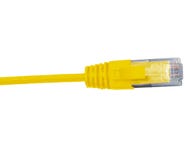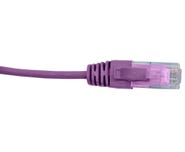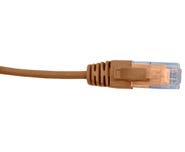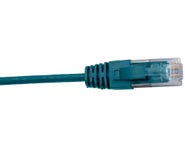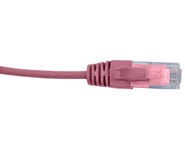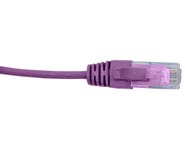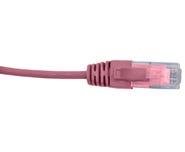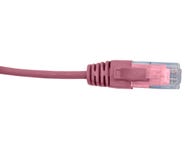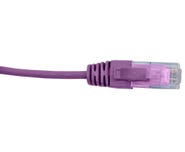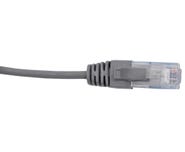

Exploring the Advantages of Thin Patch Leads
For Australian data installers, selecting the right network components is critical to achieving the performance and reliability that your customers expect. Among these components, the humble patch lead plays a crucial role in interconnecting various devices. Slim or reduced diameter patch leads have emerged as a space-saving, flexible option to reduce cable chaos in data racks across Australia. Let’s explore the top three reasons to switch to reduced diameter patch leads for your next installation.
1. Space Optimization and Scalability
Inside the average data rack, real estate comes at a premium. The streamlined design of slim patch leads, characterized by up to a 40% reduction in cable diameter, presents an ideal solution for businesses grappling with space constraints.
The compact nature of these patch leads offers a significant advantage over regular options. Data centres and server rooms can optimize their network storage and cable management for applications that require high density patching. This not only addresses current space challenges but also ensures scalability for future expansions, aligning with the growth trajectories of modern enterprises.
2. Improved Airflow and Cooling
The narrower profiles of slim patch leads contribute to more efficient airflow within server racks and cabinets. Adequate ventilation is crucial for temperature management, reducing the risk of overheating and extending the lifespan of networking equipment. In the context of the Australian climate, which can be characterised by extremes in heat and humidity, effective cooling mechanisms are imperative.
Slim patch leads not only facilitate better heat dissipation but also enhance the overall reliability of the network infrastructure by helping to minimise the impact of thermal stress on sensitive components.
3. Enhanced Flexibility and Simplified Cable Management
The reduced diameter of slim patch leads enhances flexibility, simplifying the process of managing and routing cables within confined spaces. This is because the slimmer cable has a smaller bend radius. Data specialists can navigate intricate setups with ease, leading to improved organisation and the satisfaction of a neat and tidy installation.
The flexibility of these leads not only streamlines cable management practices but also reduces the likelihood of cable-related issues such as kinks, twists, and tangles. This, in turn, translates to a more robust and resilient network infrastructure, minimising the risk of disruptions and downtime.
Are There Applications Where Regular is Better?
Just as there are positives to slim patch cords, there may be applications where regular diameter patch cords are a better option. The installer should always consider the needs and challenges at hand and choose the right option for their application.
One example is applications that require Power Over Ethernet (POE), particularly high-power devices. In these installations, slim patch cords have limitations that make a standard diameter patch cord the better option.
In conclusion, slim or reduced diameter patch leads are a simple option that has some great benefits for the installer and the end user. By optimising space, improving airflow, and enhancing flexibility, these patch leads contribute significantly to the efficiency, reliability, and scalability of the Ethernet network.
Recent Articles

Test Network Cabling & Patch Cords FAST with the New DATATESTER by CABAC
Testing LAN cables is quick and easy when you’ve got the new CABAC DATATESTER on hand. This budget LAN cable tester is perfect for contractors who need to test data and coaxial cable for correct termination.
View Products
Exploring the Advantages of Thin Patch Leads
For Australian data installers, selecting the right network components is critical to achieving the performance and reliability that your customers expect. Among these components, the humble patch lead plays a crucial role in interconnecting various devices.
View Products
FOBOT Buying Guide
In this informative article, we will provide a basic buying guide for FOBOTs or “Fibre Optic Break Out Trays” so that you can choose the right product for your specific needs.
View Products
What is a FOBOT?
In this article, we will explain what a FOBOT is and where they are used. We will also describe how a FOBOT works and the important role this component plays in managing and distributing optical fibres efficiently. So, if you're looking to learn all about FOBOTs, make sure to read this article...
View Products
What is the difference between OS1 and OS2 Singlemode Optical Fibre?
This technical article delves into the differences between OS1 and OS2 Singlemode fibre optics, including their core characteristics, performance specifications, and ideal applications.
View Products
